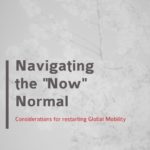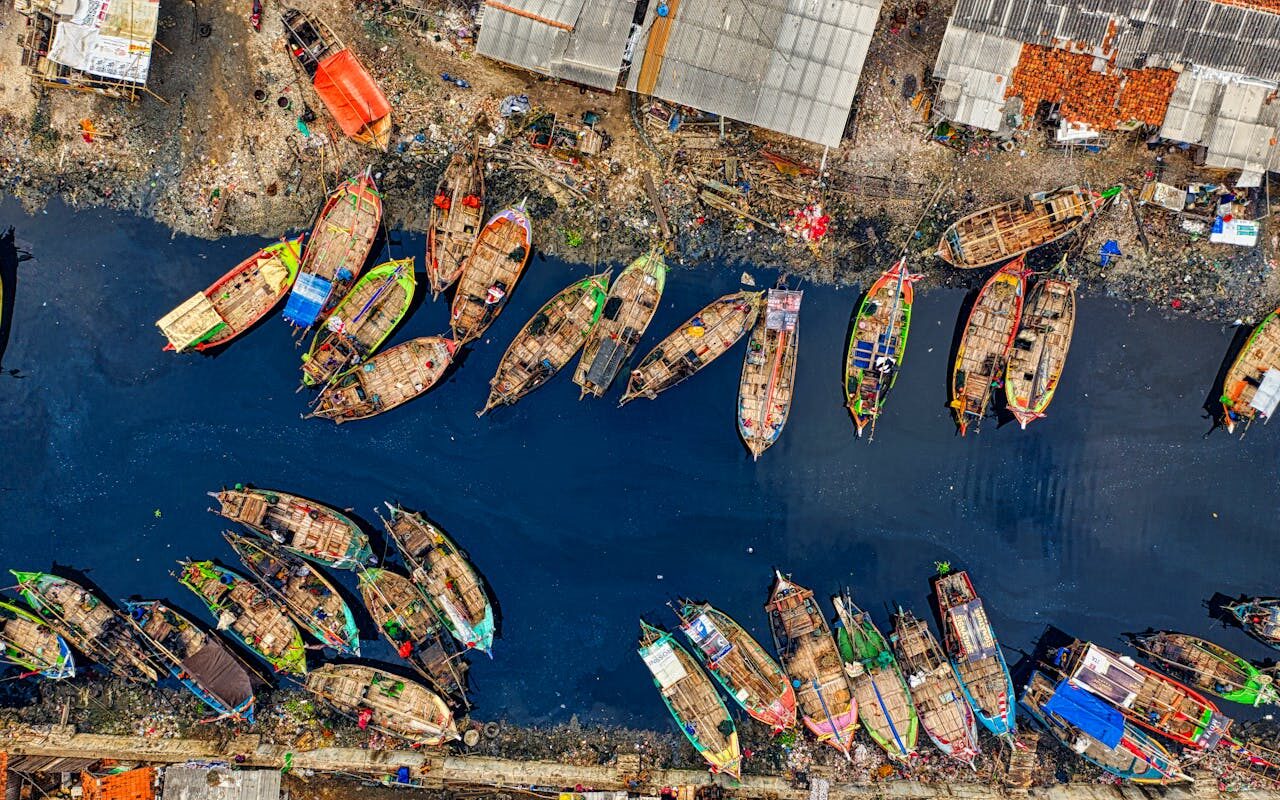Part I of this four-part series defined the Now Normal and its general themes, a place we anticipate being until the end of 2021.
Part II explored considerations for assignments during this timeframe, Part III looked at the impact to relocation timelines.
In this, our final installment, we look at things from a most critical aspect – cost.
Equal to the challenge of establishing a new relocation timeline is compiling accurate cost estimates. The cost of an assignment has increased, but by what exact percentage remains unclear. It may not be possible to predict the budget for assignments starting over the next 12 months but estimating higher than before is required. Further discussion with suppliers on as many service lines as possible is well-advised to help with realistic projections. Although it is far from an exhaustive list, there are some good items to consider.
 Insurance costs are likely to increase depending on the previous coverage. First, it is crucial to make sure any existing insurance covers COVID-19 treatment if not already completed. There might be higher coverage premiums and more complex specifications of coverage, too, if pandemics were excluded from previous policies. It is also a good time to check to make sure that telehealth is part of the policy. Reluctance to visit hospitals and doctors’ offices during outbreaks has a negative impact overall on assignee health, which access to telehealth support can help mitigate. A supplemental package or global health package may be required for assignees currently on local health plans depending on the coverage.
Insurance costs are likely to increase depending on the previous coverage. First, it is crucial to make sure any existing insurance covers COVID-19 treatment if not already completed. There might be higher coverage premiums and more complex specifications of coverage, too, if pandemics were excluded from previous policies. It is also a good time to check to make sure that telehealth is part of the policy. Reluctance to visit hospitals and doctors’ offices during outbreaks has a negative impact overall on assignee health, which access to telehealth support can help mitigate. A supplemental package or global health package may be required for assignees currently on local health plans depending on the coverage.
The shipping of household goods has been impacted by restricted borders around the world. Delays caused by backlogs and additional temporary accommodation time may increase costs. Travel expenses for assignees and family will also be higher.
Prices for flights have remained relatively stable and surprisingly economical in these early months of the pandemic while demand has been low. That is not likely to last once borders open, and business travel resumes. A report by Dollar Flight Club has estimated that ticket prices for international flights originating in the US could increase by up to 27% over 2019 rates and predicts that may well continue for several years.
 In addition to flight costs, there are new expense categories, including COVID-19 testing and quarantine costs. These fees were initially covered by the local governments when those crossing borders were predominantly citizens. In Asia, we have seen the shift of responsibility for payment of these fees over to the traveler, even if they are a national of the country in some cases. There are specifications for the employer to pay for some fees, for example, in Brunei, where the sponsoring company pays the cost of the COVID test. Other locations make different or no specific demands on the employer.
In addition to flight costs, there are new expense categories, including COVID-19 testing and quarantine costs. These fees were initially covered by the local governments when those crossing borders were predominantly citizens. In Asia, we have seen the shift of responsibility for payment of these fees over to the traveler, even if they are a national of the country in some cases. There are specifications for the employer to pay for some fees, for example, in Brunei, where the sponsoring company pays the cost of the COVID test. Other locations make different or no specific demands on the employer.
COVID testing requirements may include two or more tests. Permission to board the flight is often reliant upon proof of a negative test result taken within a specific timeframe of the flight departure. Japan requires a negative PCR test performed 72 hours before a flight, and Korea has the same requirement, but only for those traveling from high-infection rate countries. Testing is also conducted upon arrival and increasingly again before releasing from quarantine.
The price tag for quarantine can be high for both government-mandated facilities and self-selected locations. Government-mandated facilities are typically hotels or, in cases of families, sometimes serviced apartments. Regardless of the availability of choice, many destinations have specific facilities that qualify for use as a quarantine location. In the best situation, temporary accommodation can serve as the quarantine location as well, but that is rarely the case. In Asia, other residents and local communities have been especially sensitive to living in the same building with those who are infected or could be. For those who have the option to select where quarantine will be spent, they will typically still be restricted to a set of government-approved locations.
 Quarantine prices vary by location, sometimes even within the same country. They remain an item that is subject to change, but in Singapore, costs are SGD 2,000 per person for a 14-day quarantine while in Australia, costs can range between AUD 3,000 – 5,000 for an individual traveler. It is too soon to tell if an increase in demand for quarantine will impact the price, but there is that potential, especially in countries that do not regulate the process closely.
Quarantine prices vary by location, sometimes even within the same country. They remain an item that is subject to change, but in Singapore, costs are SGD 2,000 per person for a 14-day quarantine while in Australia, costs can range between AUD 3,000 – 5,000 for an individual traveler. It is too soon to tell if an increase in demand for quarantine will impact the price, but there is that potential, especially in countries that do not regulate the process closely.
Along with the testing and quarantine also come additional transportation costs. The most likely scenario to consider is that public transportation is off-limits to new arrivals, regardless of quarantine requirements. In Japan, new arrivals are banned from using public transit and can only use private transport at a much higher cost. The Narita Express train to Tokyo has a rate of JPY 3,000, while a taxi is usually JPY 20,000. Additional transportation can also be required for trips to the pre-release testing site and then again for the onward journey to the final temporary or permanent accommodations.
Risks for unforeseen disruptions are expensive and difficult to predict. Destination lockdowns, temporary border closures or restrictions, and canceled flights are all potential and realistic ones to anticipate.
 Overall, everything will take longer and, as a result, will cost more. On the one hand, the realities make pre-arrival area orientation, and home finding trips almost impossible to provide as a benefit. It may reduce overall costs by offering newer, remote programs instead, which still incur costs to deliver, but negate the requirement for more costly travel and accommodation expenses.. The risk that increased expenditure on assignee support may fall under taxable benefits for the employee is ever-present. The expensive decision to gross-up or tax protect assignees is an additional consideration.
Overall, everything will take longer and, as a result, will cost more. On the one hand, the realities make pre-arrival area orientation, and home finding trips almost impossible to provide as a benefit. It may reduce overall costs by offering newer, remote programs instead, which still incur costs to deliver, but negate the requirement for more costly travel and accommodation expenses.. The risk that increased expenditure on assignee support may fall under taxable benefits for the employee is ever-present. The expensive decision to gross-up or tax protect assignees is an additional consideration.
One last consideration for costs is cancellation fees. At the beginning of this year, many assignments were placed on hold in the middle of the relocation process including the middle of service delivery by suppliers. Canceling of on-hold assignments that no longer make sense will remove a substantial amount of costs from the balance sheet, but not all of them. Compensation to suppliers for work already done will need to be factored into the finalization.
Not all assignments will move forward, and the ones that do will not always go as planned. The degree to which plans will be impacted is dependent upon many factors that will continually shift. Earlier this year, when the pandemic hit hard, 100% of assignments experienced extreme disruption. Looking ahead for the next few months, a greater number of scenarios are possible. Perhaps 30% will have little trouble mostly resulting from changing requirements, and 20% will experience extreme disruption due to illness upon arrival or complications from the medical quarantine of the assignee or a family member. That would leave 50% of assignees experiencing medium levels of disruption from last-minute revisions to approved quarantines, canceled flights, missed timelines, and delayed household goods shipments.

Those are perhaps optimistic estimates for the Now Normal. A dose of optimism is traditional in the world of global mobility where every point of the process offers a chance for interrupted plans. The logistics of taking a family from one country into another have always been complex and over the next 12 months, that complexity prevents us from absolutes and clarity. We remain committed to ongoing communication and partnership during this time and after we reach the new normal.





